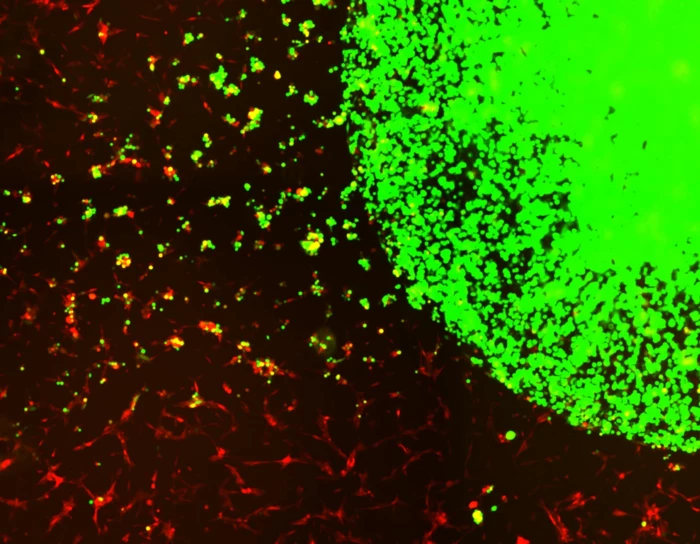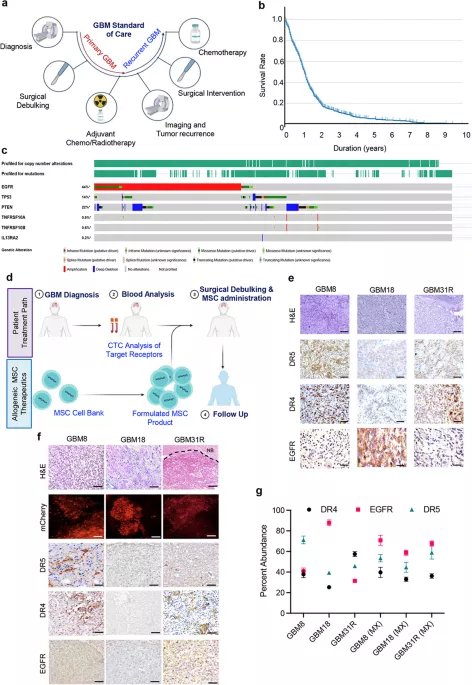According to new atlas, stem cells can be designed with different characteristics and show great potential in various fields of medicine, from the treatment of Parkinson's disease to the regeneration of injured tendons* Scientists used this technology to treat difficult tumors and developed an efficient off the shelf method, which showed "impressive efficacy" in mouse models with invasive brain cancer *, laying the foundation for clinical trials.

The idea of using engineered stem cells to target tumor cells has attracted attention as a method to treat refractory cancers. Highly invasive brain cancer, known as glioblastoma (GBM), is the main candidate. Due to the barrier of blood-brain barrier, many drugs cannot enter these tumors. Although surgery can effectively eliminate the initial tumor, the tumor recurrence rate is more than 90%.
The authors of the new study are exploring post-operative interventions to reduce this recurrence rate, which reminds them of therapies involving engineered cells. Many of these methods involve collecting patients' own cells and exposing them to reprogramming factors that can enhance their anti-cancer ability before returning them to the body, and engineered car T cell therapy is the most common and promising method.

The problem is that glioblastoma and other invasive cancers are developing very rapidly, providing a very short window for these very complex types of therapies. A more effective approach might be to have a cell bank from healthy donors, which are designed to deal with different cancers and can be deployed soon after the patient is diagnosed. This is the vision pursued by the new research authors from Brigham and women's Hospital and Harvard Medical School.
First, scientists identified specific receptors on cancer cells that circulate through the blood, which they call "death receptors". They then took stem cells from healthy donors and engineered them to release proteins that bind to these receptors to trigger the death of cancer cells. They also added a safety "switch" function to stem cells. Once their work is completed, they will destroy themselves and further promote the death of cancer cells.
These cells were packaged into biodegradable hydrogel capsules and given to mice with glioblastoma after surgical resection. All treated mice were still alive after 90 days. The average survival time of control mice who underwent surgery but did not receive stem cell therapy was 55 days. The scientists also treated mice with different doses of stem cells to determine the safety of the treatment, and found no signs of toxicity.

Study author Khalid Shah said: "As far as we know, this is the first study to determine the targeted receptors of tumor cells before starting treatment, and use biodegradable, gel encapsulated, and 'off the shelf' engineered stem cell-based treatment after GBM tumor surgery. In the future, we will apply this strategy to determine the target receptors in time after receiving the GBM diagnostic results, and then apply the gel encapsulated, off the shelf engineered stem cell therapy from a pre-made reservoir."
The researchers wrote in their paper that the treatment showed "impressive efficacy" and said the results paved the way for human clinical trials in the next two years. They hope the study will lead not only to effective new therapies for glioblastoma, but also to a variety of cancers that can overwhelm existing therapies.
"In addition to the remarkable success rate of this therapy, these findings show that we can use healthy human stem cells to treat cancer patients. This work lays a foundation for the establishment of an engineered therapeutic stem cell biobank targeting different receptors of tumor cells and immune cells in the tumor microenvironment, which will one day be used to treat a wide range of refractory cancers such as GBM," Shah said
The study was published in Nature communications 》In the magazine.